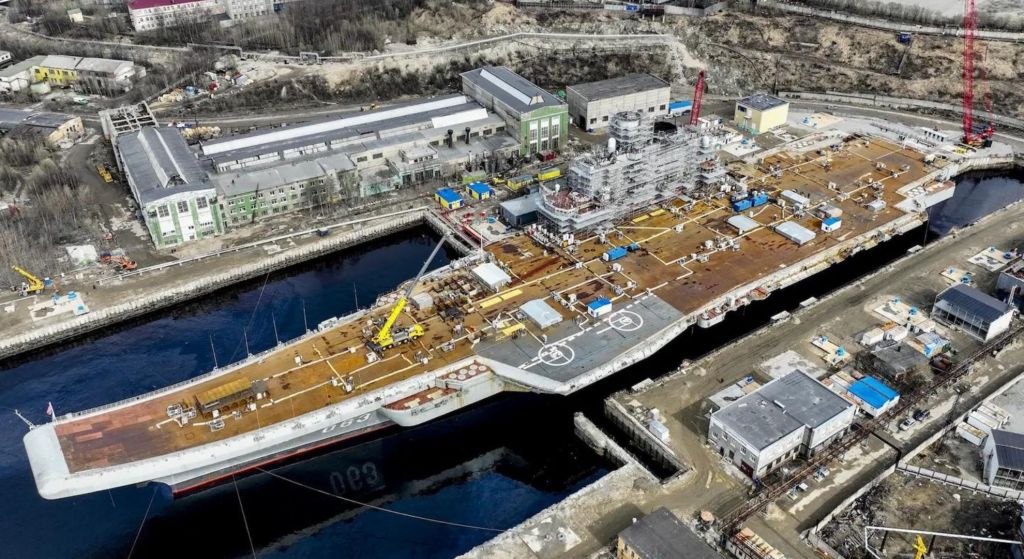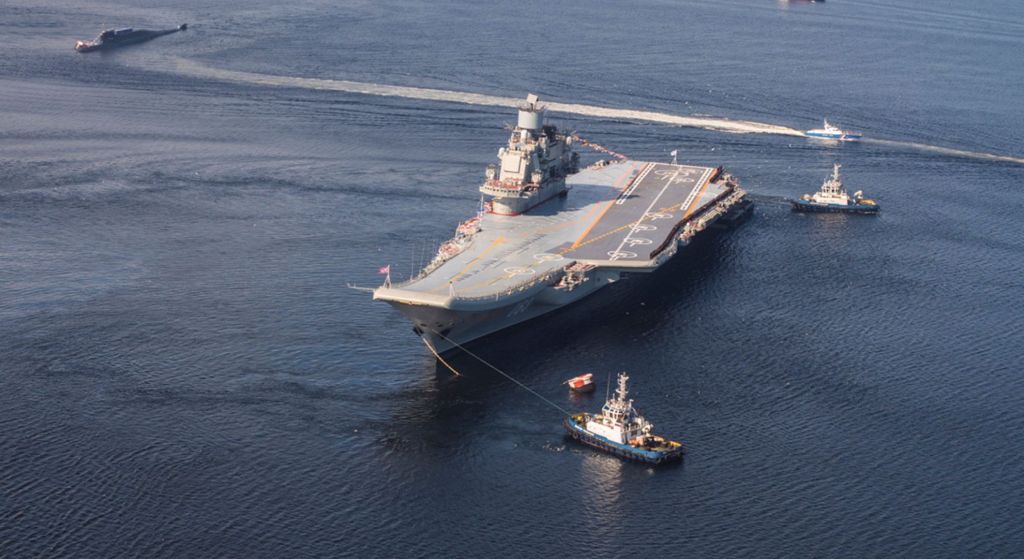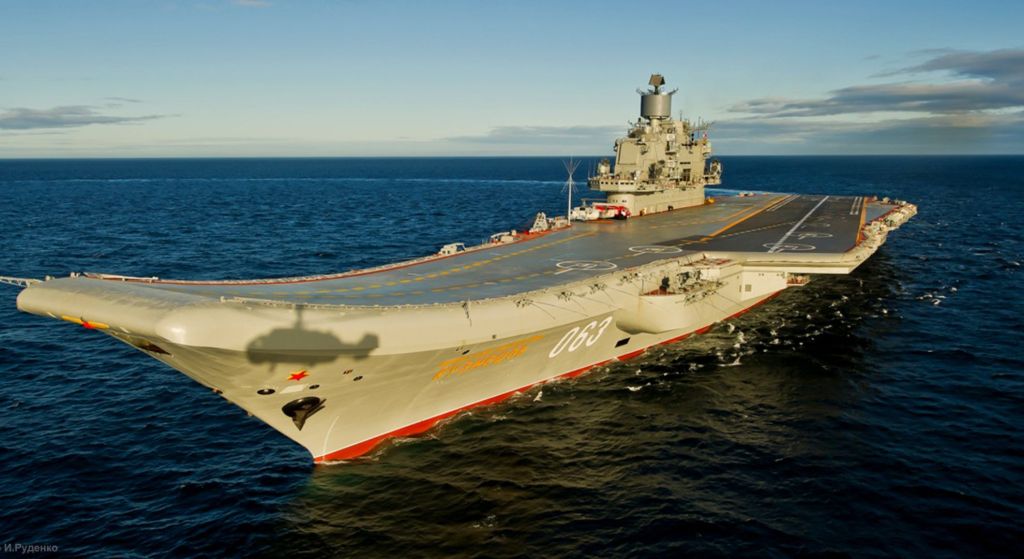Due to unfortunate events, Russia’s only aircraft carrier, Admiral Kuznetsov, has been the center of attention. From repair delays to a recent crew shortage, the journey of this flagship vessel of the Russian Navy has been far from smooth. In this article, we will delve into the challenges faced by Admiral Kuznetsov and its impact on its operational readiness.
Repair Delays and Fire Incidents
The Admiral Kuznetsov, launched in 1985, has been undergoing a refit since 2017. However, the repair process has been marred by delays and incidents, hindering its expected return to service. In 2018, a floating dock used for the overhaul sank, causing significant damage to the ship’s flight deck. The following year, a fire broke out on board the vessel, resulting in casualties and injuries. These incidents highlighted the challenges faced during the refit process and raised concerns about the vessel’s safety.
Despite these setbacks, efforts to modernize Admiral Kuznetsov have persisted, with upgrades aimed at enhancing its combat capabilities and extending its operational lifespan. However, the prolonged refit period has strained the Russian Navy’s carrier capabilities, leaving them reliant on smaller carriers and land-based aircraft for power projection. The delays also underscore broader issues within Russia’s defense industry, including inefficiencies, funding constraints, and a reliance on outdated infrastructure.
Crew Shortage and Recruitment Efforts
One of the most significant hurdles faced by Admiral Kuznetsov is the current crew shortage. The ship, which requires a substantial number of personnel to operate effectively, has few sailors assigned to it. According to Russian state media, the Russian Navy is now recruiting a new crew for Admiral Kuznetsov. The previous crew members were reportedly moved off the ship and assigned other duties, with many completing their conscription terms and returning to civilian life.

The Russian Navy must recruit over a thousand new sailors to crew the aircraft carrier properly. The exact number varies depending on the source, with estimates ranging from 518 officers, 1,442 enlisted ship’s company, and 626 air-group members to 396 officers, 1,127 ship’s company, and 626 air-group members. However, Admiral Kuznetsov currently needs a significant portion of its required crew.
Aircraft Carriers’ Strategic Role in Modern Naval Warfare
Aircraft carriers have been crucial in modern naval warfare, serving as floating air bases that extend a nation’s military reach far beyond its shores. For Russia, Admiral Kuznetsov is more than just a ship; it represents a strategic asset that enhances the country’s ability to project power globally. This section will explore aircraft carriers’ strategic roles and advantages, including force projection, deterrence, and rapid response capabilities, and how these aspects apply to Admiral Kuznetsov despite its challenges.
Challenges of Crewing an Aircraft Carrier
Crewing an aircraft carrier is complex, particularly regarding the ship’s engineering and aviation sections. These areas require highly trained personnel to handle the sophisticated systems and ensure their safe operation. Admiral Kuznetsov’s propulsion and electrical systems have been prone to constant breakdowns, leading to concerns about its reliability. Furthermore, the flight deck presents constant dangers, with live ordnance, moving airplanes, and arrestor cables requiring utmost care and expertise.
Unlike some navies that operate multiple aircraft carriers, allowing for the transfer of specialists between ships, Admiral Kuznetsov is Russia’s only carrier. This lack of redundancy makes it even more challenging to maintain a ready and skilled crew. The absence of proper training facilities and the inability to transfer personnel from other vessels exacerbated the difficulties faced by the Russian Navy in crewing Admiral Kuznetsov.
Admiral Kuznetsov’s unique design and outdated systems present additional hurdles for crew training and maintenance. With limited hands-on experience and modernization opportunities, the skillset required to operate and maintain such a vessel becomes increasingly specialized and complex to cultivate. As a result, the Russian Navy needs help ensuring the readiness and proficiency of the personnel assigned to its sole aircraft carrier.
Extended Refit and Future Upgrades
Admiral Kuznetsov’s repair and refit process has been delayed, with the ship’s return to service pushed back multiple times. Originally expected to be ready in 2019, the completion date has been revised to 2024, seven years after the refit began. The extended timeline has raised concerns about the effectiveness and efficiency of the repair process.

Despite the challenges, Admiral Kuznetsov is set to receive significant upgrades during the refit. Several turbo boilers prone to frequent breakdowns have been replaced with new Russian-made ones. The ship will also undergo improvements in deck coating, aircraft arresting gear, electronic warfare, communications, navigation, and combat control systems. Additionally, it is expected to maintain its complement of unique anti-ship missiles and be equipped with hypersonic weapons.
The Significance of Admiral Kuznetsov for Russia
Admiral Kuznetsov holds great significance for Russia, especially in projecting its naval power. With the recent battlefield defeats in Ukraine, Russia is keen to assert its capabilities and remind the world of its military prowess. However, the challenges faced by Admiral Kuznetsov have raised questions about the vessel’s effectiveness and the overall state of the Russian Navy.
Retiring the carrier could be a viable solution, considering the ongoing issues and the need for a substantial crew. However, the symbolic value of Admiral Kuznetsov as a representation of Russia’s power prevents such a decision. Russia aims to maintain its status as a global power, and Admiral Kuznetsov plays a crucial role in this narrative.
FAQ’s
What is the name of the Russian aircraft carrier?
The only Russian aircraft carrier is the Admiral Kuznetsov, the flagship of the Russian Navy.
What is the status of the Russian aircraft carrier completion?
The completion status of the Russian aircraft carrier can be tracked using Gantt charts, which visually represent the project timeline and progress.

How many aircraft carriers does Russia have?
Russia currently has one operational aircraft carrier, the Admiral Kuznetsov.
What is the current condition of the Russian aircraft carrier?
The current condition of Admiral Kuznetsov has been a subject of concern, with reports of maintenance issues and accidents.
Are there any plans for new Russian aircraft carriers?
Discussions and plans have been to construct new Russian aircraft carriers to modernize the fleet and enhance military capabilities.
The journey of Russia’s Admiral Kuznetsov has been fraught with challenges, from repair delays to crew shortages. The incidents and setbacks during the refit process have highlighted the difficulties faced by the Russian Navy in maintaining and operating this aircraft carrier. The crew shortage further exacerbates the vessel’s readiness and safety concerns.
Admiral Kuznetsov remains a symbol of Russia’s naval power despite the obstacles. The ongoing refit aims to address the ship’s shortcomings and equip it with upgraded systems. However, the test lies in successfully recruiting and training a skilled and sufficient crew. Only then can Admiral Kuznetsov fulfill their role as the flagship of the Russian Navy and project Russia’s presence on the global stage.





